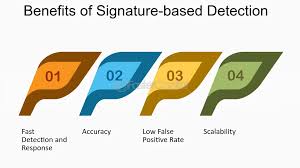
Affiliate Disclosure
Note: This banner contains an affiliate link. If you click and make a purchase, we may earn a commission at no extra cost to you. This helps us maintain and improve our content for users like you, supporting our travel site operations.
Antivirus software has come a long way since its inception in the late 1980s. Initially designed to combat basic viruses, today’s antivirus solutions have evolved into complex systems that use cutting-edge technology, including artificial intelligence (AI), to protect against a wide range of cyber threats. This transformation has been driven by the increasing sophistication of malware and the changing landscape of cybercrime. In this article, we’ll explore the journey of antivirus software, from its humble beginnings to the highly advanced systems used today.
1. The Beginnings of Antivirus Software

The earliest versions of antivirus software emerged in the 1980s in response to the first computer viruses, such as the “Brain” virus (1986) and the “Cascade” virus (1987). These early viruses were relatively simple and could be detected and removed using basic signature-based detection techniques. Antivirus programs of this era were limited in scope and functionality, often requiring regular updates to maintain effectiveness.
The primary job of early antivirus programs was to scan files for known virus signatures and compare them to a database of infected files. If a match was found, the software would either quarantine the file or delete it. This approach was effective for a time, but as the number of viruses grew, it became clear that a more dynamic and advanced solution was needed.
2. Signature-Based Detection: The Early Standard

For much of the 1990s, signature-based detection was the cornerstone of antivirus technology. This method relies on identifying specific patterns or “signatures” of known malware to detect infections. Antivirus vendors would constantly update their databases with new virus signatures to ensure that their software could recognize the latest threats.
While effective against known viruses, signature-based detection had several limitations. It could not detect new, unknown viruses, nor could it identify variants of existing viruses that had been modified to avoid detection. Additionally, it required frequent updates to stay relevant, making it less effective at defending against rapidly evolving malware.
Despite these drawbacks, signature-based detection remained the primary method of antivirus protection for years. It wasn’t until the early 2000s that more sophisticated techniques began to emerge.
3. Heuristic Analysis: A Step Toward Proactive Protection

In the early 2000s, antivirus developers began incorporating heuristic analysis into their software to address the limitations of signature-based detection. Heuristic analysis involves analyzing the behavior and characteristics of a file to determine whether it is malicious, even if it has never been seen before.
This approach allowed antivirus software to detect “unknown” viruses by looking for suspicious behavior, such as unusual file access patterns or attempts to modify critical system files. Heuristic analysis offered a more proactive approach to malware detection and helped protect users from emerging threats.
While heuristic analysis improved antivirus protection, it was not without its challenges. False positives, where legitimate files were flagged as malicious, became more common, leading to frustration among users. Nevertheless, heuristic analysis played a key role in the evolution of antivirus software by enabling it to detect new and evolving threats.
4. The Rise of Cloud-Based Security

As the internet became more widespread in the 2000s, new threats such as online phishing, spyware, and web-based malware emerged. Antivirus software needed to evolve once again to address these new challenges. This led to the development of cloud-based security solutions that could provide real-time protection by analyzing threats in the cloud rather than on the local device.
Cloud-based antivirus software has several advantages over traditional software. For one, it can quickly and automatically update its malware database, ensuring that users are always protected against the latest threats. Additionally, by offloading heavy analysis tasks to the cloud, it reduces the strain on the user’s system, leading to faster performance and lower resource consumption.
Cloud-based security also enables quicker response times to new threats, as malware can be analyzed and detected by security experts in real time. This shift to the cloud marked a significant milestone in the evolution of antivirus software, providing more effective and efficient protection against increasingly sophisticated threats.
5. The Role of Machine Learning in Antivirus Software

In recent years, machine learning (ML) has become a key component of modern antivirus software. Machine learning algorithms can analyze large amounts of data to identify patterns and anomalies that may indicate the presence of malware. This allows antivirus software to recognize new threats more quickly and accurately than ever before.
Machine learning algorithms can be trained on vast datasets of malware samples, enabling them to identify potential threats based on their behavior, rather than relying solely on predefined signatures. This makes it easier to detect previously unseen viruses, as the software can learn to recognize suspicious activities and behaviors that indicate malicious intent.
One of the key advantages of machine learning is its ability to adapt to new and evolving threats. As malware authors continue to develop new techniques and tactics, antivirus software powered by machine learning can stay ahead of the curve by learning from new data and adjusting its detection methods accordingly.
6. AI Integration: The Future of Antivirus Protection
Artificial intelligence (AI) is the next frontier in antivirus technology. By combining machine learning with AI, antivirus software can become even more sophisticated in its ability to detect and respond to cyber threats. AI-powered antivirus solutions can analyze vast amounts of data from multiple sources, such as network traffic, file behaviors, and user activity, to identify threats in real time.
AI also enables predictive capabilities, allowing antivirus software to anticipate potential threats based on patterns and trends. For example, AI can detect early signs of a new type of malware before it has fully propagated, giving users a head start in defending against emerging threats. Additionally, AI can automate many of the tasks traditionally performed by human security experts, such as analyzing suspicious files and determining the level of risk.
AI-powered antivirus software can also offer more personalized protection, adjusting its behavior based on the user’s specific habits and preferences. By using advanced algorithms to understand user behavior, AI can provide more accurate threat detection and minimize false positives.
7. Challenges and Concerns with AI in Antivirus Software
While AI offers numerous advantages in the realm of cybersecurity, its integration into antivirus software is not without challenges. One of the primary concerns is the potential for AI to be used by cybercriminals to develop more sophisticated malware. Just as antivirus software can use AI to detect and prevent threats, hackers can use AI to create malware that is harder to detect and more difficult to mitigate.
Another challenge is the potential for bias in AI algorithms. If AI is trained on incomplete or biased data, it may make incorrect decisions or fail to recognize certain threats. This could result in missed detections or false positives, undermining the effectiveness of antivirus software.
Finally, AI-powered antivirus software requires significant computing power and resources to function effectively. While this is less of an issue for cloud-based solutions, users with older or less powerful devices may experience performance issues as a result of the increased demands of AI processing.
8. The Future of Antivirus Software

The future of antivirus software will likely be shaped by continued advancements in AI, machine learning, and cloud computing. As cyber threats become more sophisticated and diverse, antivirus software will need to evolve to keep pace. In addition to improving detection capabilities, future antivirus solutions will likely focus on proactive security measures, such as preventing attacks before they happen.
Antivirus software may also become more integrated with other cybersecurity tools, such as firewalls, VPNs, and identity protection services, to provide comprehensive protection for users. As AI continues to advance, it could lead to even more personalized and automated security solutions that adapt to the specific needs of each user.
Conclusion
The evolution of antivirus software has been driven by the increasing sophistication of cyber threats and the need for more effective protection. From the early days of basic virus detection to the integration of AI-powered systems, antivirus software has come a long way in safeguarding our digital lives. Today’s antivirus solutions are smarter, faster, and more capable than ever before, offering comprehensive protection against a wide variety of threats. As cybercrime continues to evolve, so too will antivirus software, ensuring that users can continue to enjoy a secure online experience.

